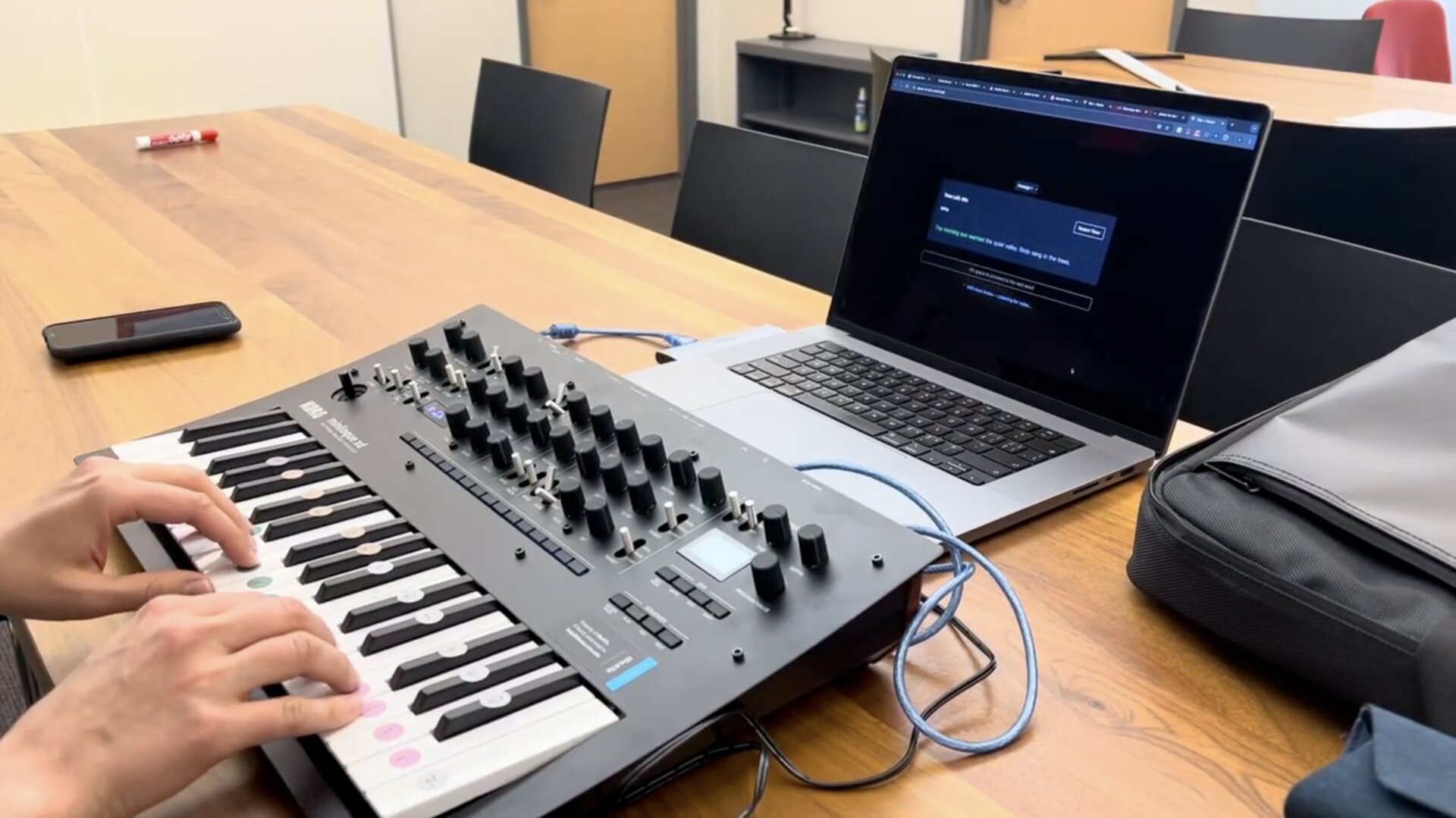overview
As a member of CMU's Business Technology Group (BTG) Product Studio, I worked as a UX/UI Designer on an interdisplinary team to address a real service challenge in our campus's mailroom.
Our final deliverable was a set of design artifacts that could be used to guide the development of a new package queue management system for mailroom employees, along with a waittime prediction model for students.
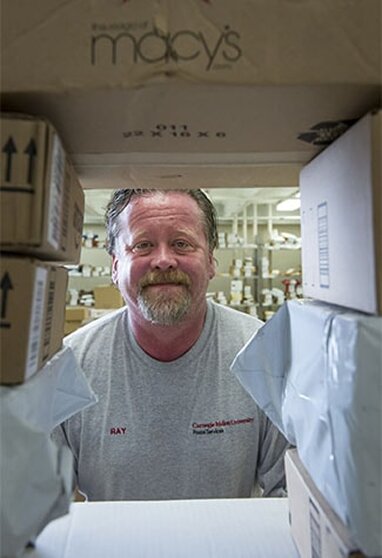
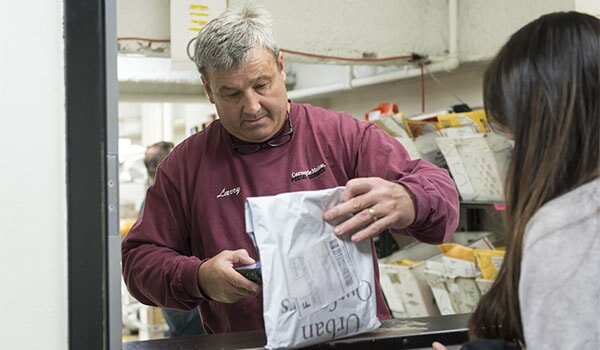
problem

Brainstorming process flows and pain points
setbacks
As we began working with the mailroom staff, we encountered significant communication barriers that impacted our project timeline and scope.
📞 Employee Apprehension
Employees were apprehensive to work with BTG, with initial responses of being too busy to meet with us.
📧 No Communication
No response to emails asking to interview them.
🚫 On-Site Restrictions
Employee said we could not evaluate as students picked up packages, limiting our research capabilities.
scope redefinition
Facing communication challenges with the mailroom, we pivoted our approach to focus on what we could control: designing user-centered interfaces that could work independently of the staff.
We shifted from a full implementation project to a design research and prototyping initiative, focusing on creating validated concepts that could demonstrate value and potentially be implemented in the future.
research
I interviewed dozens of students to understand their mailroom frustrations and expectations.
My team conducted observational research in the mailroom to map current workflows and identify key metrics like package pickup counts, line size, and average pickup time.
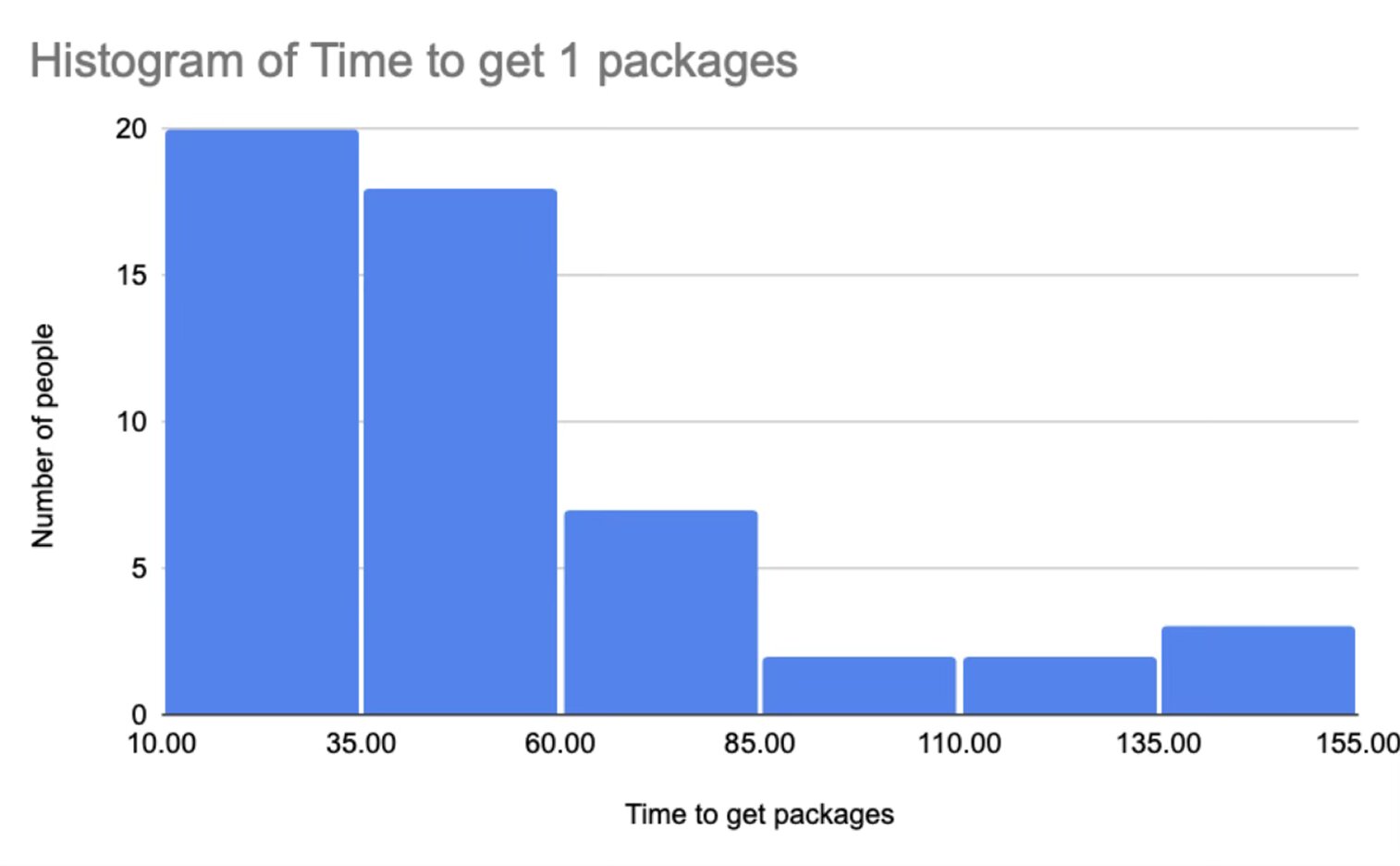

design
in‑line touchscreen kiosk
I designed large‑format touchscreen interfaces for students waiting physically in line. These answers populate the waitlist system below.
- Big‑tap UI: accessible controls for crowded, one‑handed use
- Clear steps: ensures students are prepared to pick up their packages
- Interactive Prototypes: design was tested with students to identify the most intuitive flow
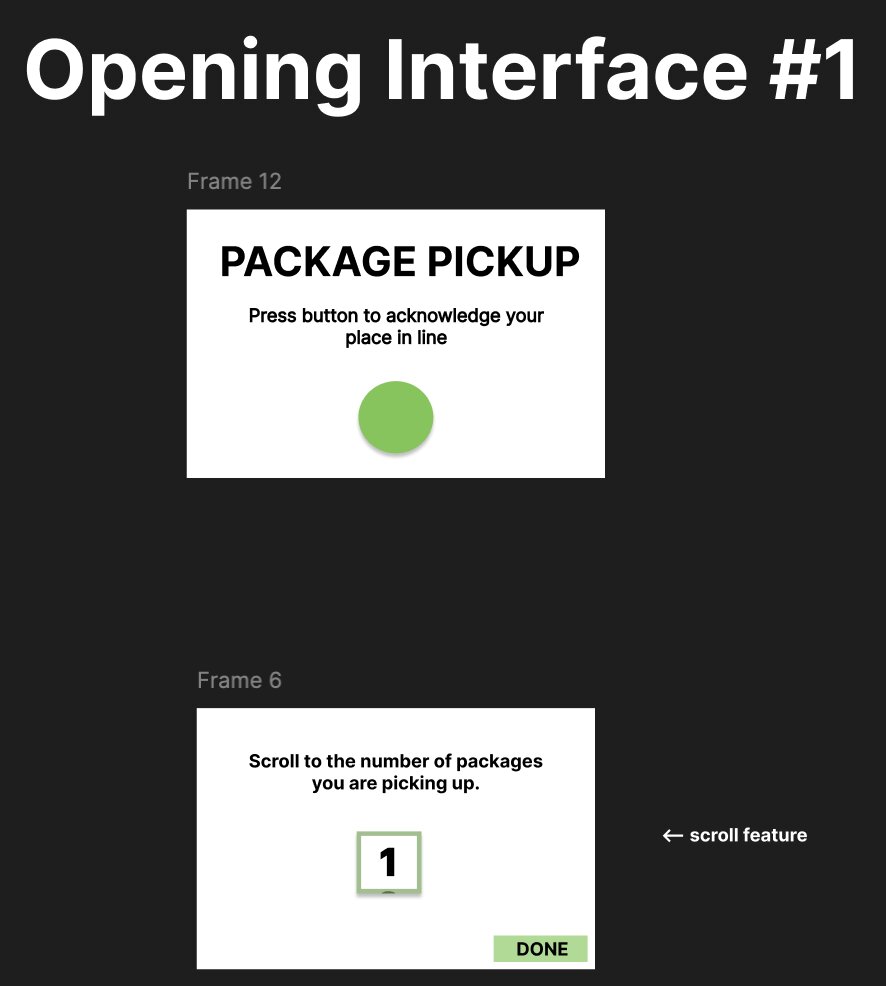
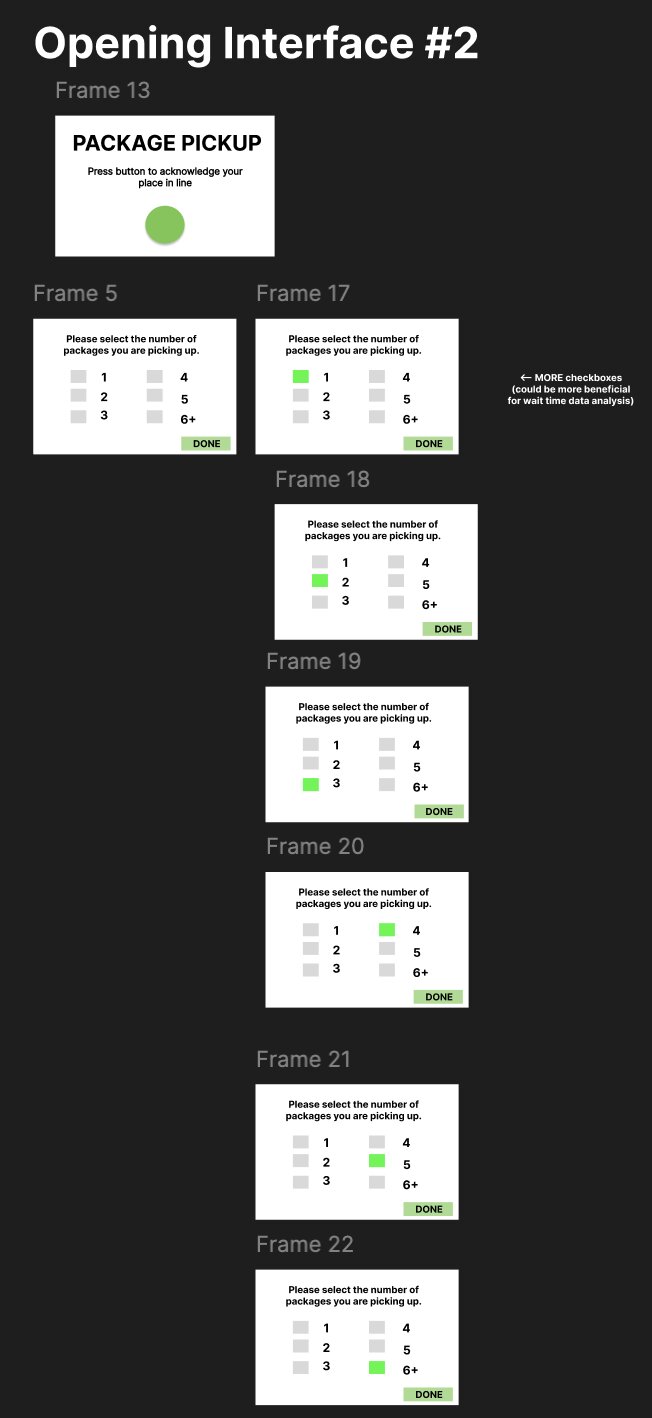
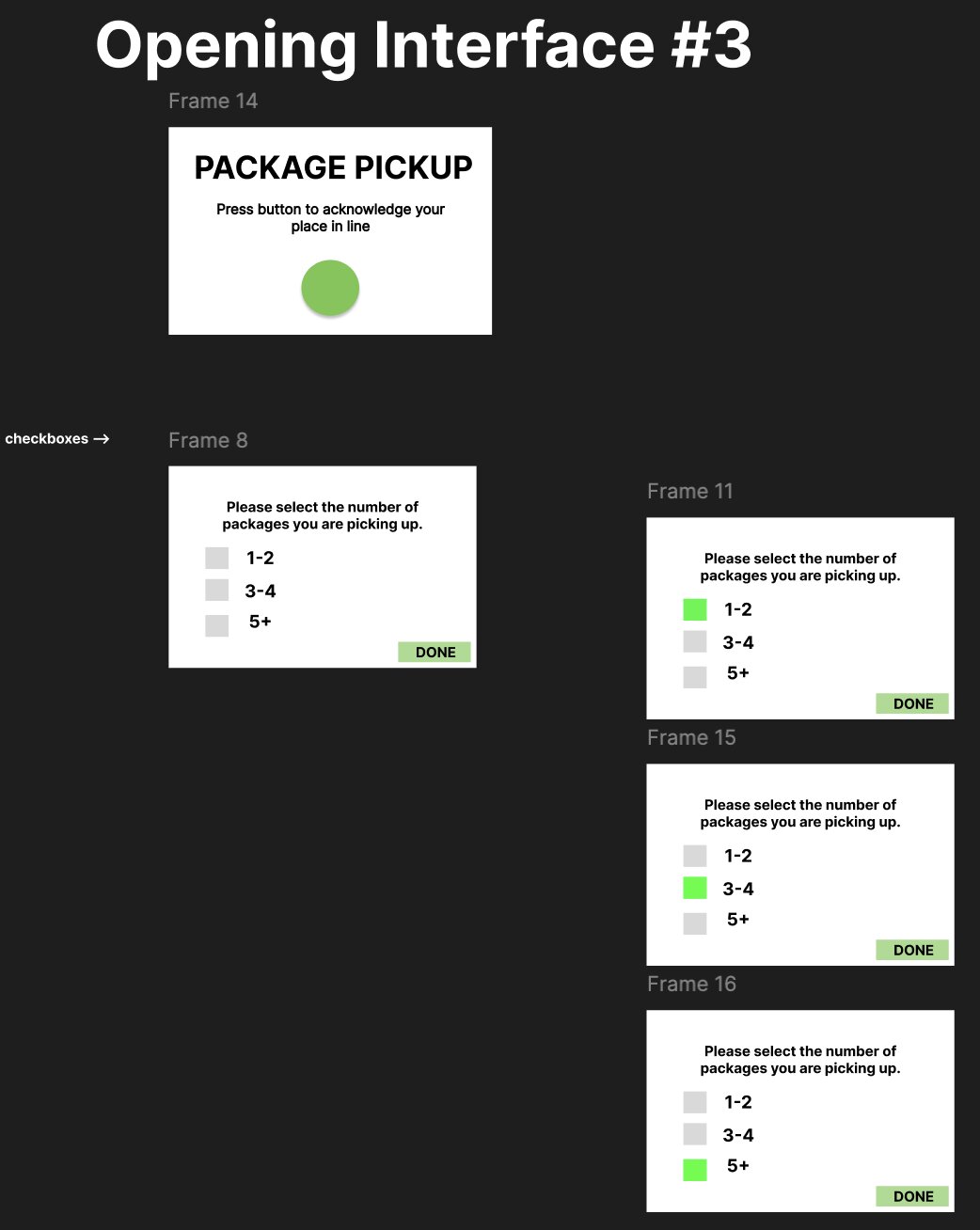
waitlist system
I designed webpage interfaces for students trying to check the wait time online. These interfaces would change based on the kiosk data received from above.
- Range of Statistics: number of people ahead, estimated waittime, and daily typical waittimes
- Typographic Hierarchy: human-centered design for increased readability
- Live status: updated in real-time as the line moves
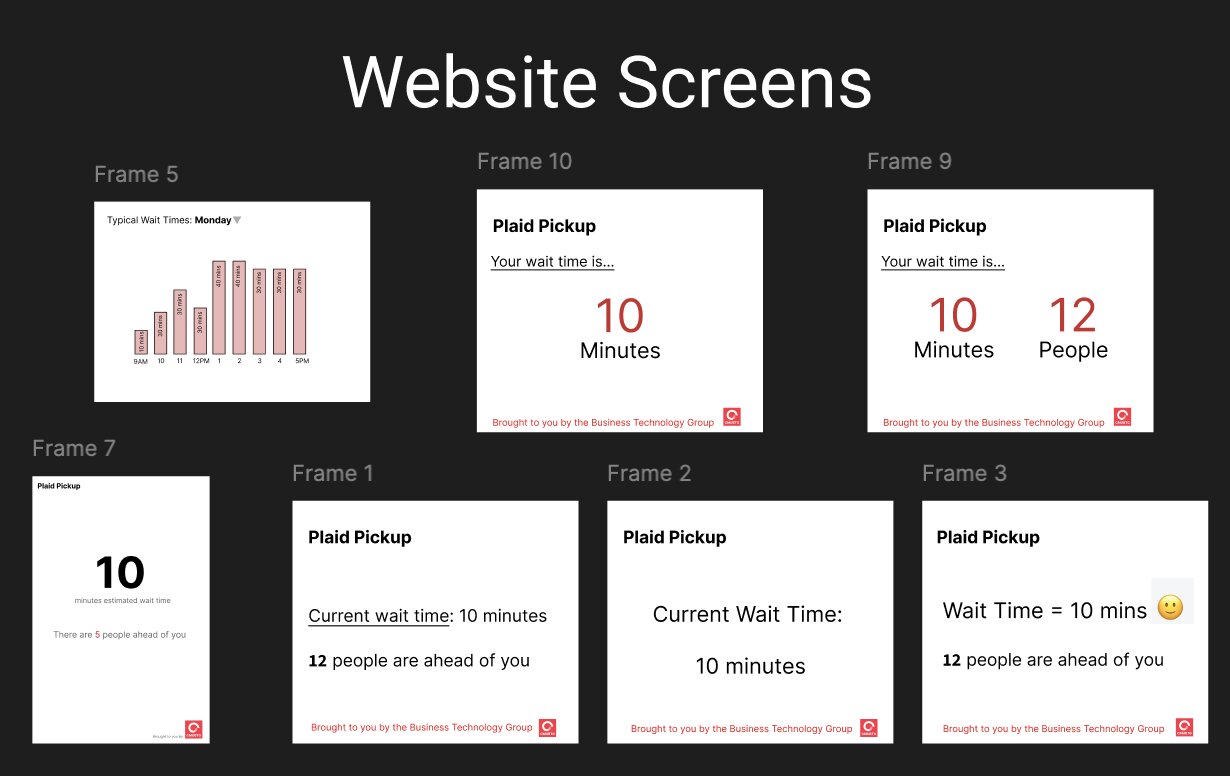
future plans
While the project faced implementation challenges, the research and design work created a solid foundation for future development. The validated concepts and user insights provide a roadmap for potential mailroom improvements.
🧪 Test
Conduct usability testing with the designed interfaces to validate user flows and identify areas for improvement.
📊 Evaluate
Measure the impact of queue transparency on student satisfaction and mailroom efficiency through pilot studies.
🔍 Explore
Investigate alternative implementation approaches that don't require extensive staff involvement or operational changes.
Key Takeaway
- Importance of scoping realistically with stakeholder buy-in from the beginning
- Even if a project doesn't launch, strong research and design artifacts can still demonstrate process and value
- Communication and continuity with clients is critical to prevent projects from losing momentum

